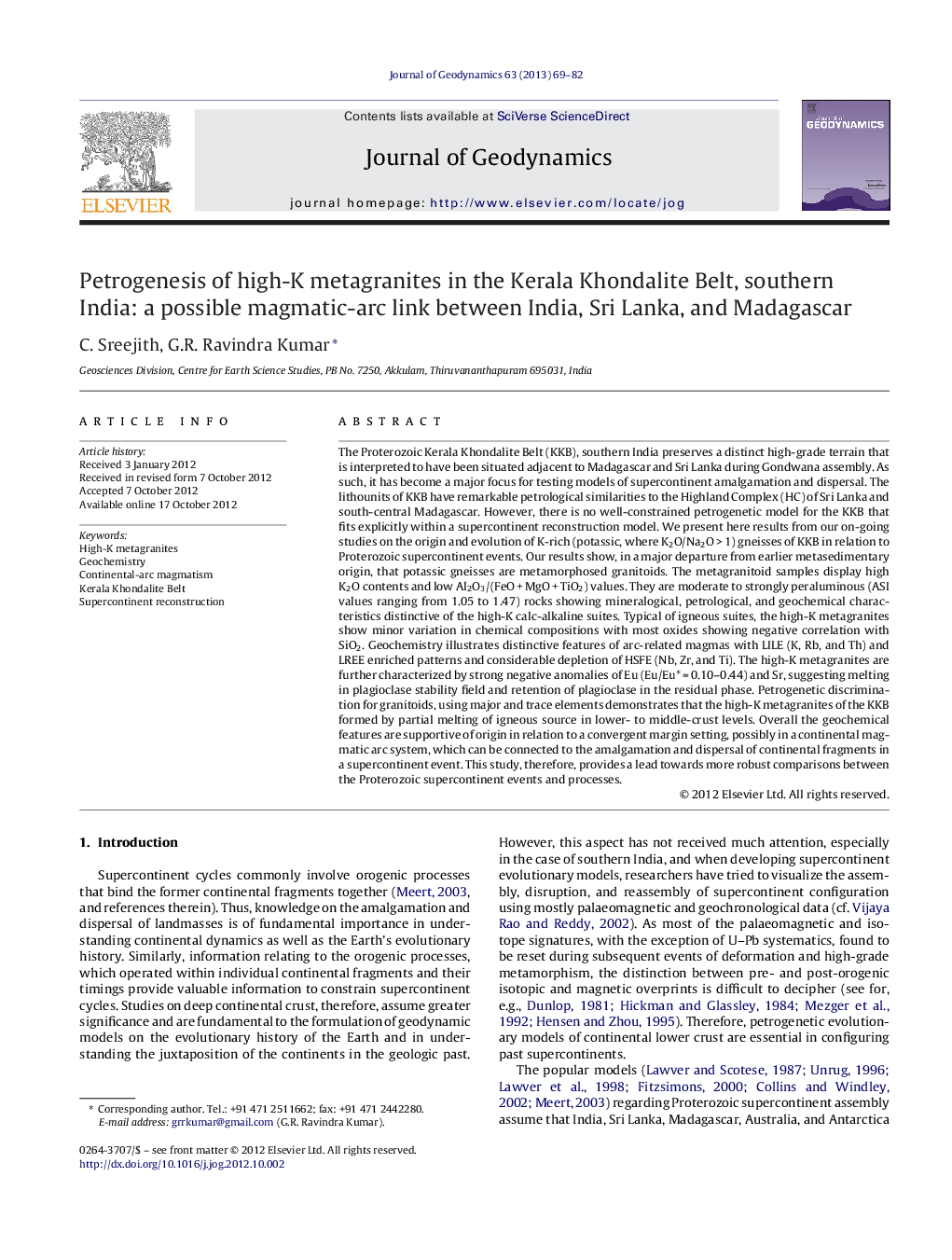| کد مقاله | کد نشریه | سال انتشار | مقاله انگلیسی | نسخه تمام متن |
|---|---|---|---|---|
| 4688321 | 1635786 | 2013 | 14 صفحه PDF | دانلود رایگان |

The Proterozoic Kerala Khondalite Belt (KKB), southern India preserves a distinct high-grade terrain that is interpreted to have been situated adjacent to Madagascar and Sri Lanka during Gondwana assembly. As such, it has become a major focus for testing models of supercontinent amalgamation and dispersal. The lithounits of KKB have remarkable petrological similarities to the Highland Complex (HC) of Sri Lanka and south-central Madagascar. However, there is no well-constrained petrogenetic model for the KKB that fits explicitly within a supercontinent reconstruction model. We present here results from our on-going studies on the origin and evolution of K-rich (potassic, where K2O/Na2O > 1) gneisses of KKB in relation to Proterozoic supercontinent events. Our results show, in a major departure from earlier metasedimentary origin, that potassic gneisses are metamorphosed granitoids. The metagranitoid samples display high K2O contents and low Al2O3/(FeO + MgO + TiO2) values. They are moderate to strongly peraluminous (ASI values ranging from 1.05 to 1.47) rocks showing mineralogical, petrological, and geochemical characteristics distinctive of the high-K calc-alkaline suites. Typical of igneous suites, the high-K metagranites show minor variation in chemical compositions with most oxides showing negative correlation with SiO2. Geochemistry illustrates distinctive features of arc-related magmas with LILE (K, Rb, and Th) and LREE enriched patterns and considerable depletion of HSFE (Nb, Zr, and Ti). The high-K metagranites are further characterized by strong negative anomalies of Eu (Eu/Eu* = 0.10–0.44) and Sr, suggesting melting in plagioclase stability field and retention of plagioclase in the residual phase. Petrogenetic discrimination for granitoids, using major and trace elements demonstrates that the high-K metagranites of the KKB formed by partial melting of igneous source in lower- to middle-crust levels. Overall the geochemical features are supportive of origin in relation to a convergent margin setting, possibly in a continental magmatic arc system, which can be connected to the amalgamation and dispersal of continental fragments in a supercontinent event. This study, therefore, provides a lead towards more robust comparisons between the Proterozoic supercontinent events and processes.
► We examine geochemistry of high-K metagranites of Kerala Khondalite Belt (KKB) for a magmatic origin.
► We recognize intracrustal melting of tonalitic protolith in the petrogenesis of KKB high-K metagranites.
► Continental magmatic-arc setting is suggested.
► Tectonic model unveil the missing magmatic-arc link between India, Sri Lanka, and Madagascar.
Journal: Journal of Geodynamics - Volume 63, January 2013, Pages 69–82